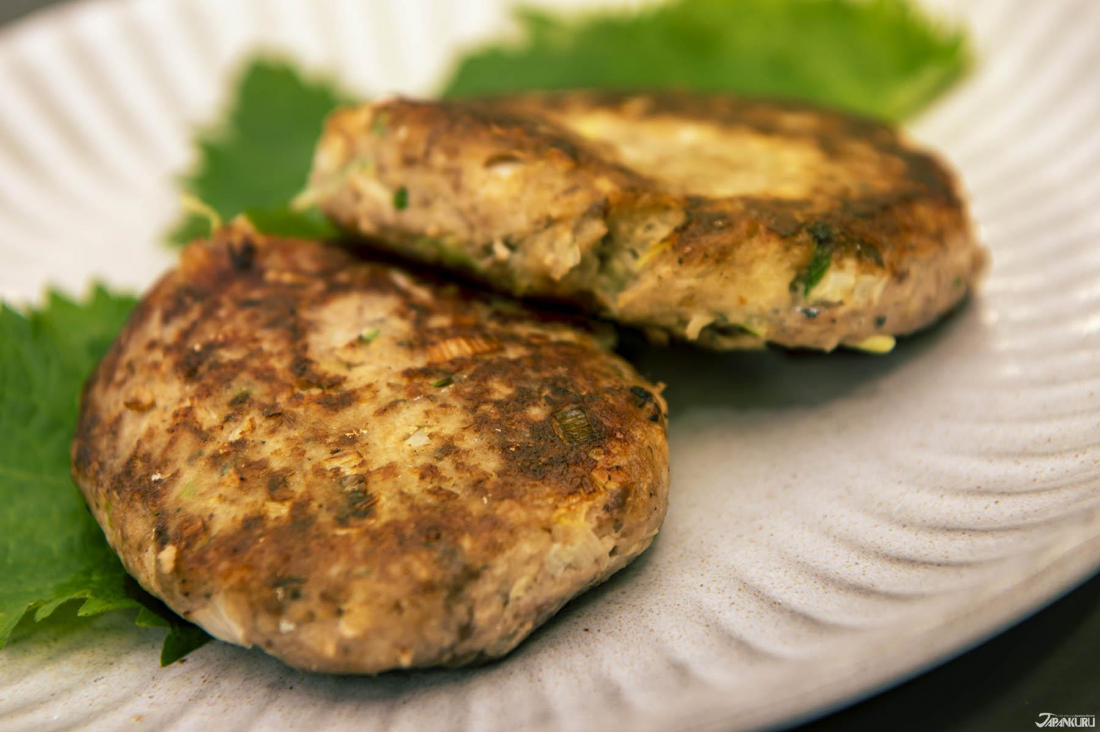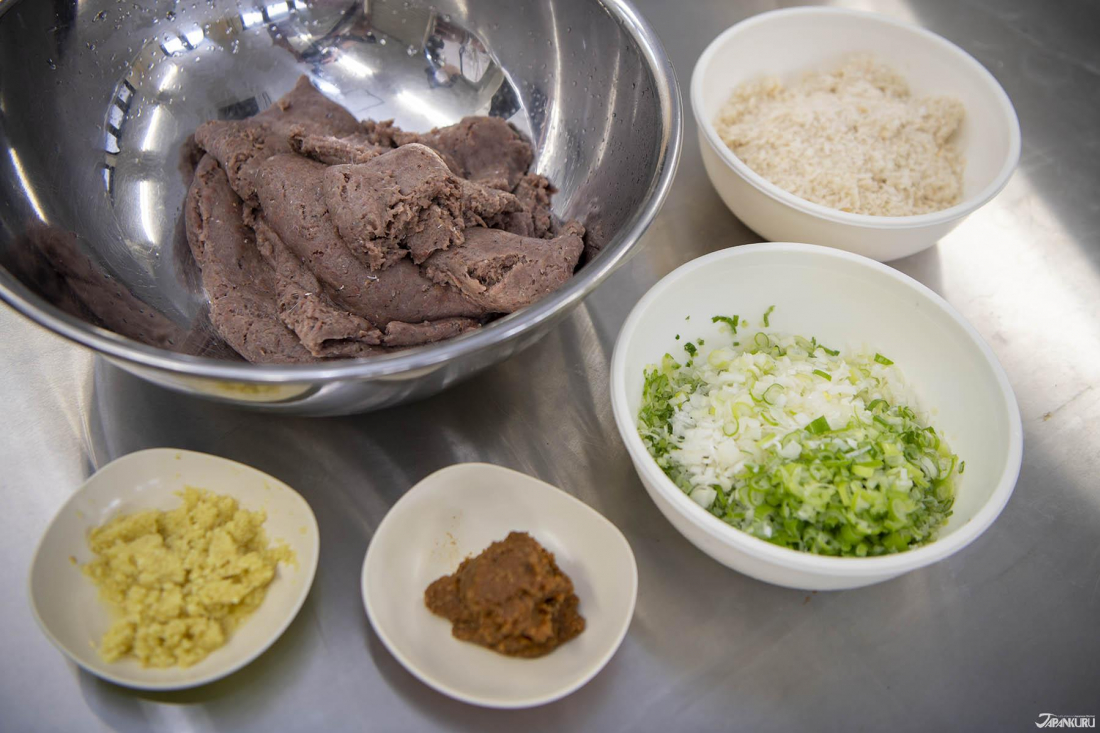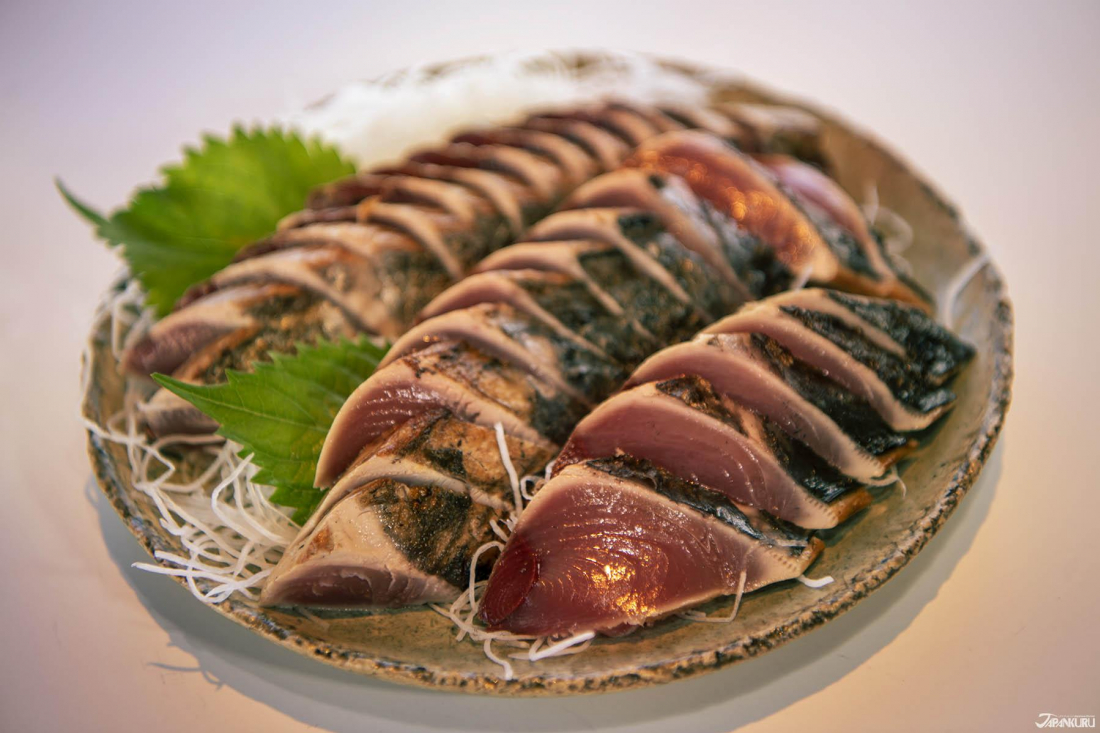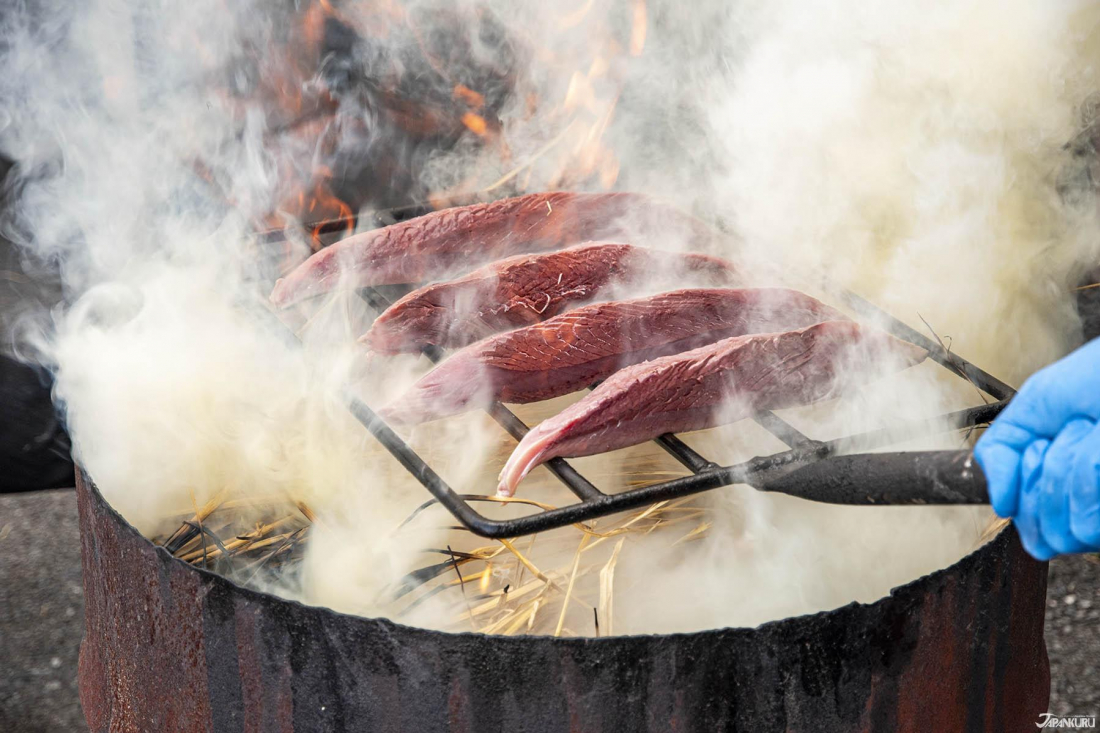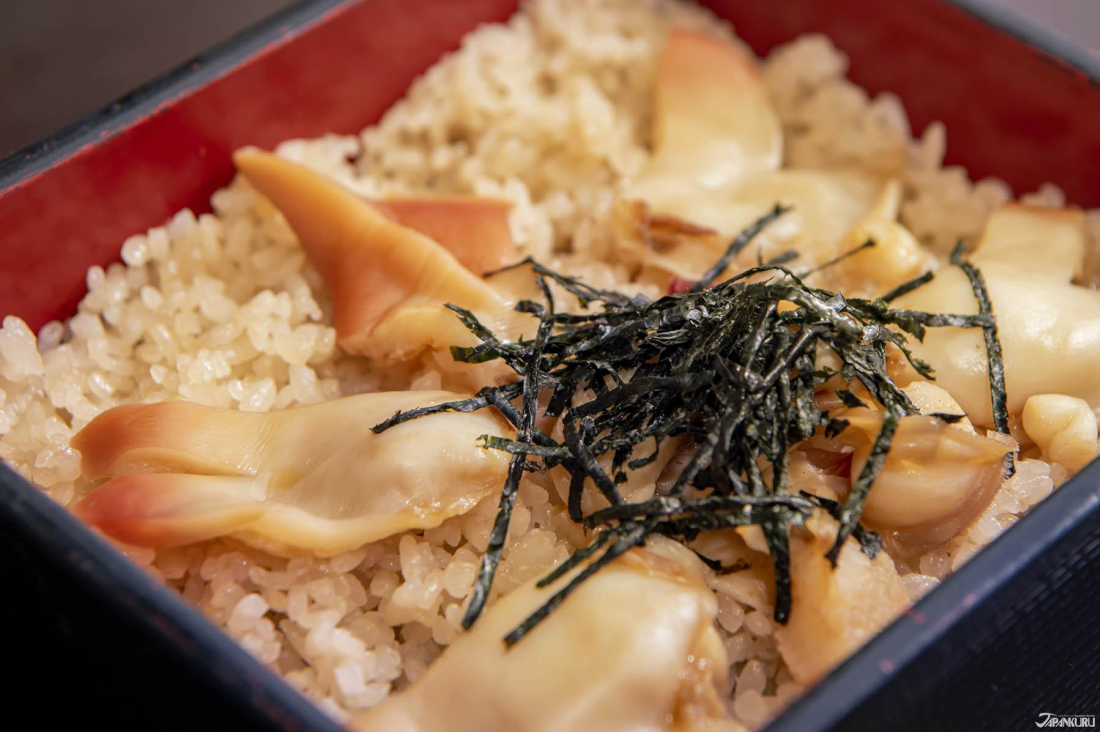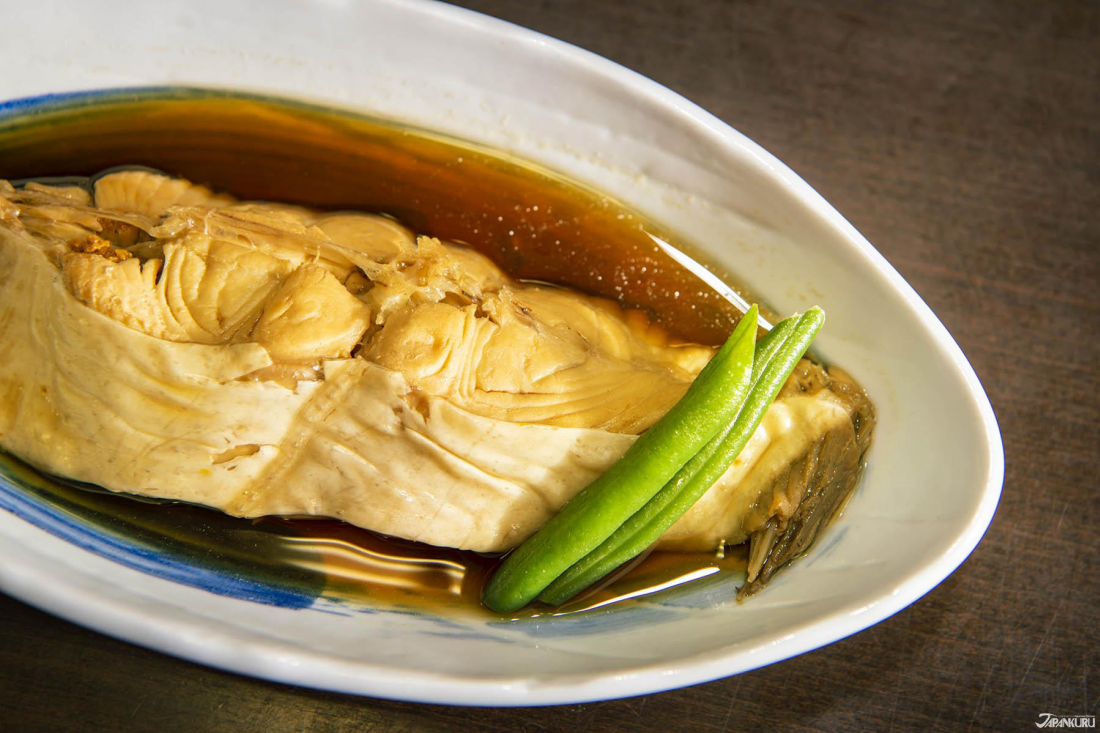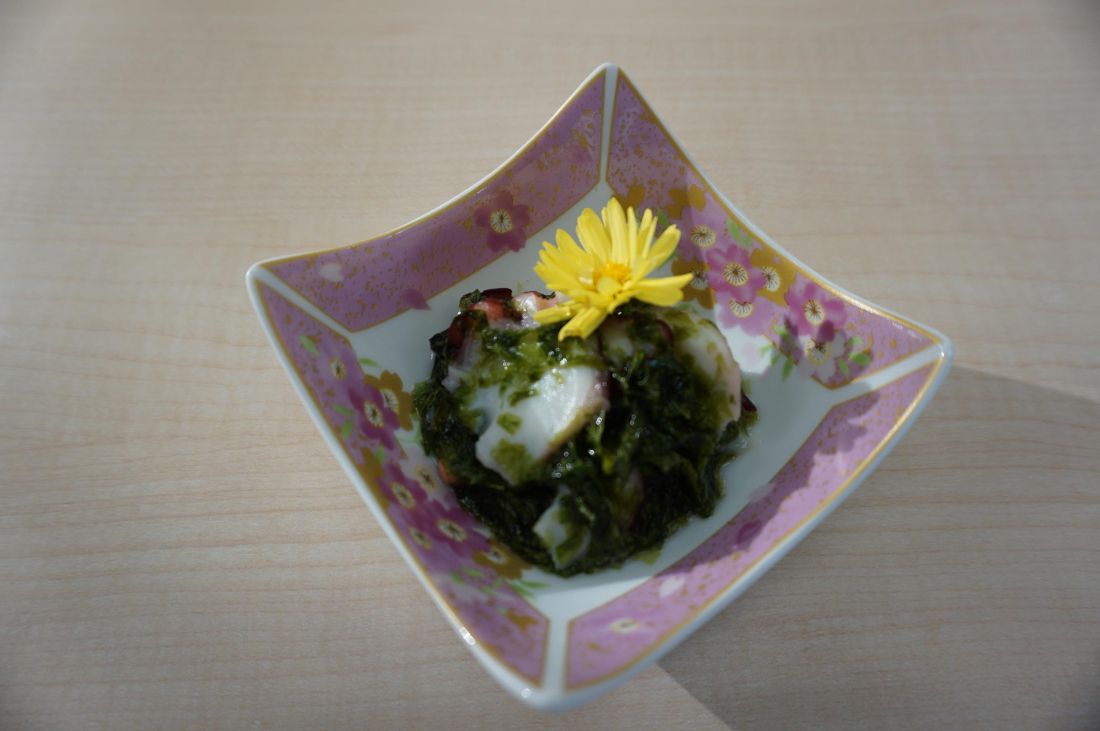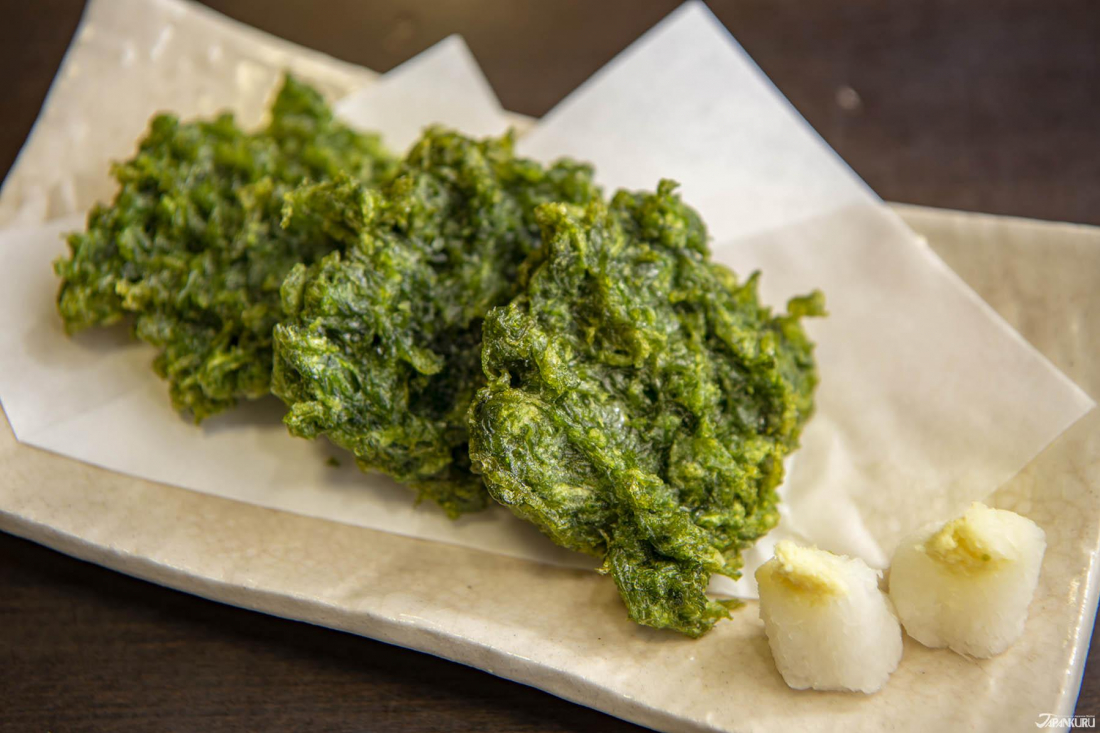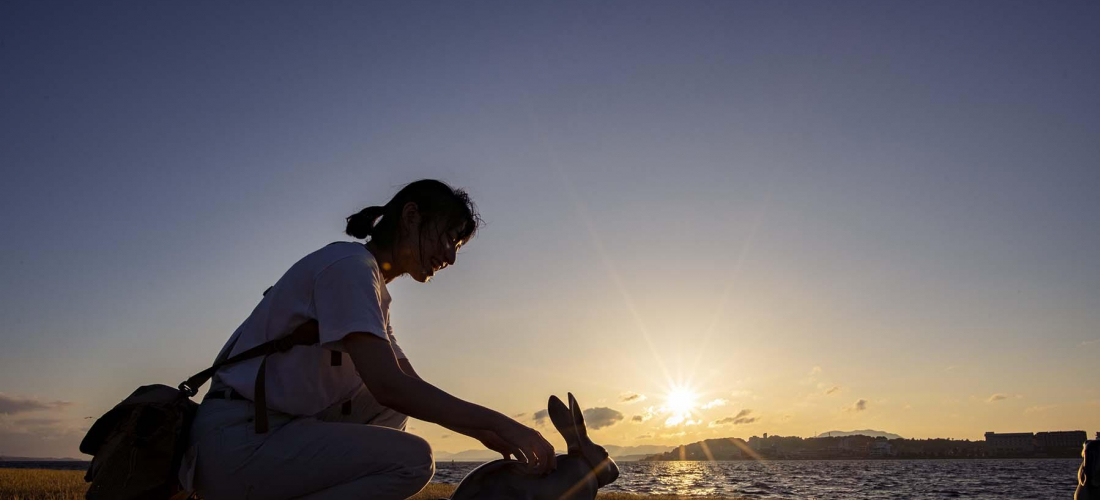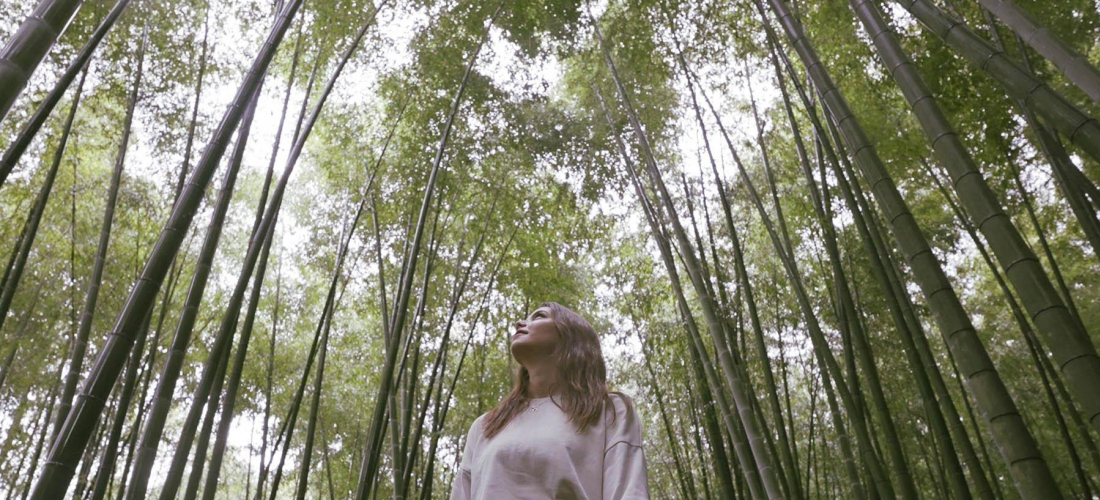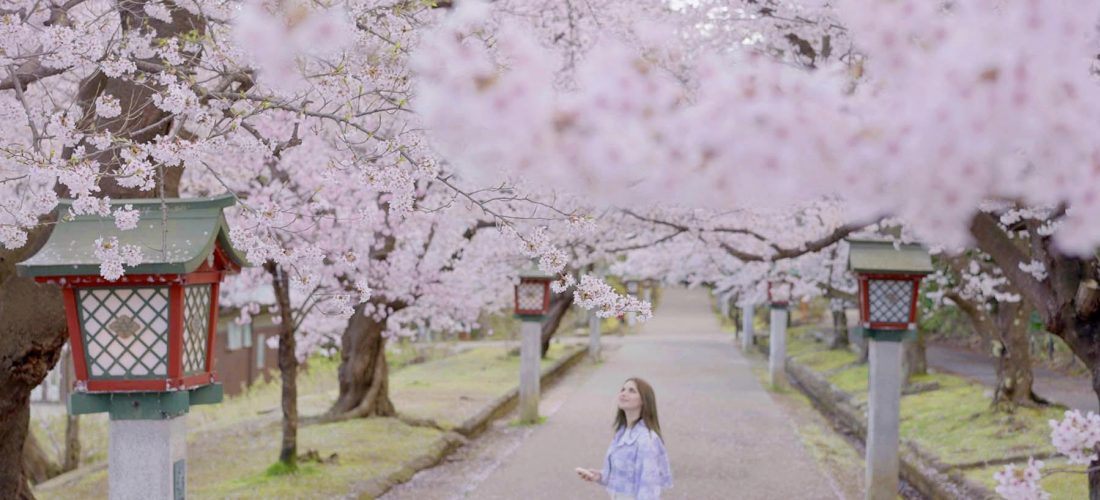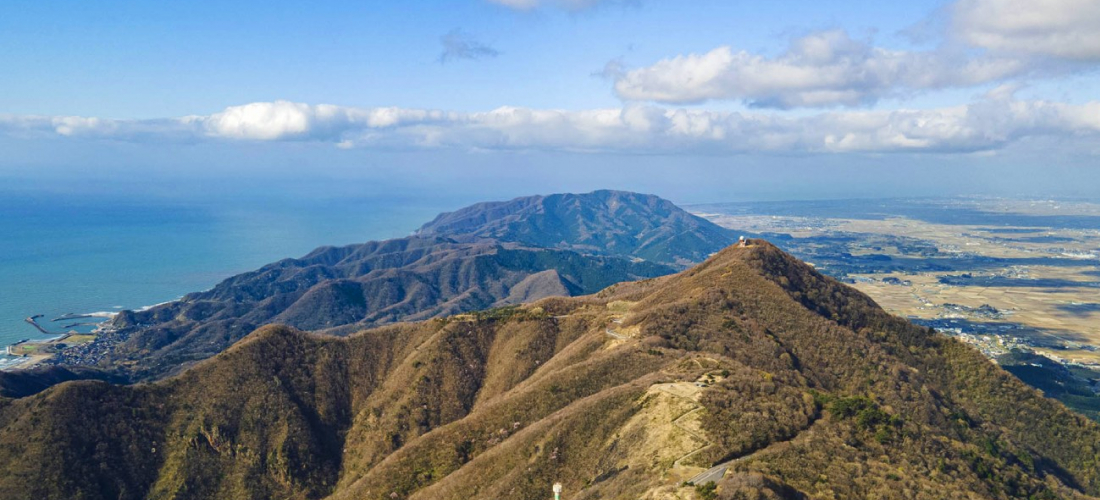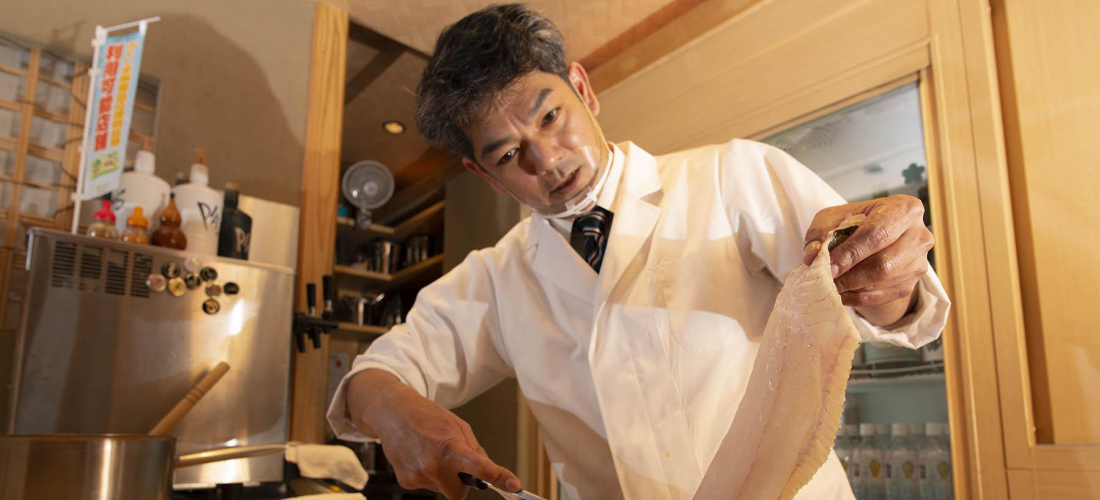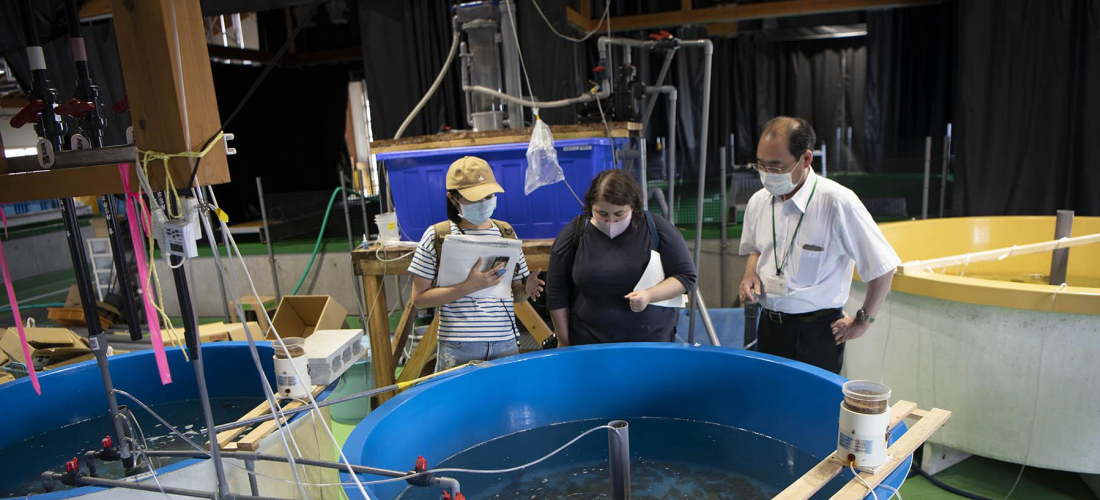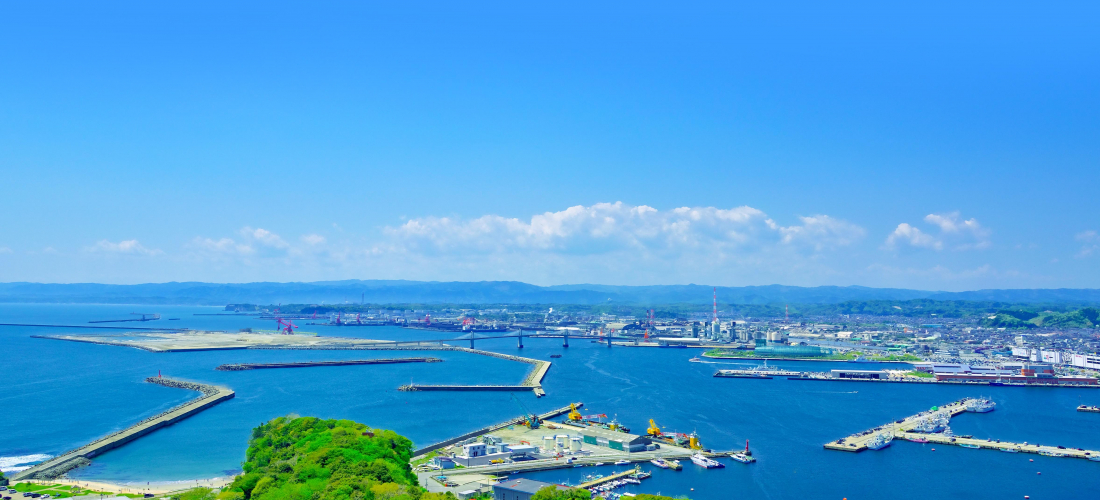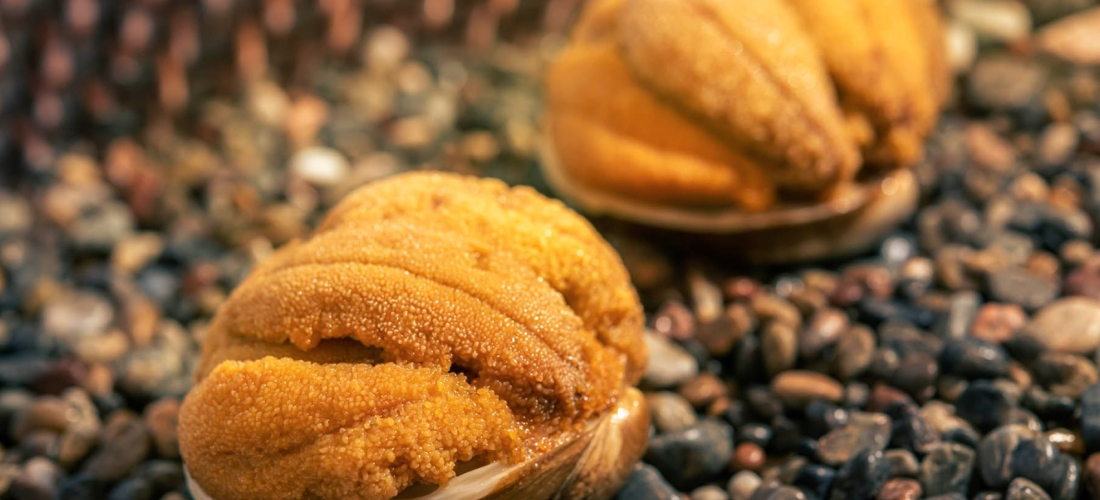
CONTENTS
Poissons plats de toutes sortes, listao, palourdes, balaou du Pacifique, algues aonori et plus encore, tout vient du marché des marchés aux poissons de Toyosu, là où les courants Oyashio et Kuroshio se retrouvent et emmènent toutes sortes de fruits de mer. Mais quels plats les habitants préparent-ils dans les villes côtières d’Iwaki et de Soma à Fukushima, pour tirer le meilleur parti de ces ingrédients frais?
Joban-mono et cuisine locale à Hama-dori
Si vous avez suivi la série Joban-mono ici sur Japankuru, vous connaissez probablement déjà l'histoire de cette ressource naturelle particulièrement populaire. Avec des éloges aussi nombreux concernant le Joban-mono, il n'est pas surprenant que vous vous demandiez quelle est la meilleure façon de le manger! Donc, si vous vous rendez dans la région côtière de Hama-dori de Fukushima, assurez-vous de rechercher quelques-uns de ces plats populaires, qui sont aussi les favoris des gens locaux de Fukushima.
Trois spécialités locales d’Iwaki
① Uni no Kaiyaki (oursin cuisiné dans une coquille de palourde)
Si vous aimez la saveur riche et la douceur légère de l'uni (oursin), ce luxueux petit uni no kaiyaki vous fait probablement déjà saliver. L'oursin doré sortant d'une coquille de palourde est un plat de fruits de mer emblématique originaire de la ville d'Iwaki.
Ce plat est une spécialité régionale de l'ère Meiji (1868 – 1912), avant le temps des réfrigérateurs, quand ils faisaient cuire à la vapeur l'uni frais sur des coquilles de palourdes pour prolonger sa durée de conservation. Ce plat est le régal ultime pour les amateurs de fruits de mer passionnés, et une bouchée de cet uni pêché dans la mer de Shiome remplira votre bouche d'un arôme sucré et du goût de l'océan.
② Sanma Popo-yaki (burger de poisson sanma)
Lors de la cuisson du sanma, la plupart des chefs japonais penseront au poisson grillé classique du Japon. Mais ce poisson est plus qu'omniprésent à Iwaki depuis longtemps, et avec tant de sanma entre les mains des cuisiniers locaux, certains d'entre eux ont clairement fait preuve d'un peu de créativité en cours de route, en particulier lorsqu'ils cuisinent pour des enfants difficiles qui pourrait ne pas aimer la forte saveur de ce poisson gras. La recette du popo-yaki est simple: dépouiller, désosser et enlever les entrailles du poisson, avant de le hacher finement et de le mélanger avec de l'oignon haché, du gingembre, du miso et peut-être un ingrédient secret ou deux pour égayer les choses. Avec ces ingrédients fortement aromatisés, le résultat final est un équilibre qui permet à quiconque d'apprécier facilement la saveur du sanma. Le popo-yaki est cuit comme vous pourriez faire cuire un hamburger ou un gâteau de crabe (une autre recette similaire), avec un peu d'huile dans une poêle.
«Yaki» signifie frit en japonais, mais la partie «popo» du nom du plat a quelques origines possibles. Le Japon est connu pour son utilisation courante des onomatopées, et certains disent que le bruit de ces galettes en train de frire sonne un peu comme "po po". Pendant longtemps, la recette était courante chez les pêcheurs qui faisaient griller les galettes de poisson en mer, et le bruit de l'huile dégoulinant du poisson et sur le feu pouvait aussi ressembler à "po po". D'autres pensent que le «po po» reproduit en fait le son que vous émettez lorsque vous expirez autour d'une bouchée de popo-yaki fraîchement sortie de la poêle, alors que vous essayez de refroidir les aliments trop chauds dans votre bouche.
Comme la plupart des plats cuisinés à la maison, les préférences de popo-yaki varient d'un ménage à l'autre, ce qui entraîne des recettes différentes où que vous alliez. Cette fois, l'équipe de Japankuru a pu voir du popo-yaki fraîchement préparé par les chefs d'Uenodai Yutaka, un magasin qui prépare et vend du popo-yaki dans la ville d'Iwaki. Le propriétaire du magasin, Yutaka Uenodai (écrit un peu différemment du nom du magasin), a ajouté que "éclabousser de la sauce soja après avoir fait frire les galettes est assez savoureux, ou même un peu de ketchup aux tomates. Le ketchup est particulièrement populaire auprès des enfants. Mais le popo-yaki est déjà assaisonné de miso dans la galette elle-même, c'est donc déjà délicieux sans aucun condiment ajouté. " Bien sûr, l esanma faisant tellement partie des prises quotidiennes à Iwaki, le popo-yaki n'est pas la seule recette locale unique. De nombreux cuisiniers sèchent également le poisson, traditionnellement, ajoutant une saveur supplémentaire avec du vin de riz mirin et d'autres condiments!
③ Katsuo no Warayaki (Thon grillé)
Le listao (ou bonite) grillé sur un feu de paille était à l'origine une spécialité locale dans la partie de la préfecture de Kochi qui était autrefois la province de Tosa – pas du tout proche de Fukushima. Mais avec une telle listao de haute qualité pêchée au large d'Iwaki, ces jours-ci, cela ressemble à de la cuisine de Fukushima. Du début de l'été à l'automne, lorsque la qualité du listao Joban-mono est imbattable, les morceaux de poisson sont grillés au-dessus des flammes intenses de la paille de Fukushima locale, vous donnant une chance de savourer la vraie saveur du listao.
Une fois le poisson grillé, il est rapidement jeté dans l'eau froide pour arrêter la cuisson, avant d'être coupé en tranches épaisses et servi avec du gingembre et de la sauce soja. Cette méthode de cuisson particulière permet à la couche la plus externe du poisson de cuire, mais laisse les parties internes crues comme du sashimi. La paille confère également un arôme fumé unique, intensifiant l'arome du listao. Il n'est pas difficile de comprendre pourquoi ils pourraient vouloir revendiquer cette recette particulière comme étant la leur, à Iwaki.
Trois spécialités de Soma
① Hokki-meshi (Riz à la palourde)
À Iwaki, le popo-yaki est une cuisine maison classique que l'on trouve sur les tables du dîner autour de la ville, mais qu'en est-il à Soma? La réponse pourrait bien être hokki-meshi: riz cuit avec des palourdes de Sakhaline (appelé hokki-gai, ホ ッ キ 貝, en japonais). Les palourdes de surf à Soma sont particulièrement célèbres, et ce plat simple montre leur saveur fraîche, préparée avec juste un peu de sauce soja et du saké de cuisson pour ajouter de la profondeur au riz et aux palourdes. La simplicité de la recette maison la rend populaire auprès de tous les membres de la famille, petits et grands. Et bien sûr, il est également disponible dans les restaurants, comme Takohachi, un restaurant que nous avons mentionné dans la partie 5 de cette série.
② Karei no Nitsuke (Sole en bouillon)
La dernière fois que nous avons entendu Kanji Tachiya, président de la Soma Futaba Fisheries Cooperative Association, il nous disait que "le poisson plat de Soma est considéré comme l'un des meilleurs du Japon". Et ce poisson plat particulièrement délicieux est un ingrédient quotidien de Soma, surtout lorsqu'il est cuit dans un bouillon sucré, une préparation appelée "nitsuke" (煮 付 け). Lors de la visite de l'équipe Japankuru à Soma, nous avons pu essayer de la sole rouge cuite (appelée karei, カ レ イ) dans un restaurant local, mais nous avons plus tard eu le privilège de voir une version maison préparée pour nous lors d'une interview en ligne avec le Club des femmes de l'Association de la coopérative.
On dit que les habitants de la région de Hama-dori ont le goût des saveurs fortes, et même dans ce plat simple, ils ont tendance à utiliser des variétés de sauce soja particulièrement audacieuses. Rien que par la couleur profonde du bouillon et son arôme alléchant, il est clair que vous ne serez pas satisfait d'une seule bouchée de ce poisson tendre.
③ Tako to Aonori no Sumono (pieuvre et algues au vinaigre) / Aonori Tempura
La lagune de Matsukawaura est un monument emblématique de Soma, et l'algue aonori cultivée dans les eaux de la lagune est un produit local célèbre. Non seulement les habitants dégustent les algues et les ajoutent à la soupe miso, mais ils ont également mis au point un certain nombre de recettes pour tirer le meilleur parti de l'ingrédient. Lors de notre discussion en ligne avec le club des femmes de l'Association coopérative des pêches de Soma Futaba, par exemple, elles ont concocté un petit plat unique avec du poulpe, des algues aonori et du vinaigre. La combinaison de poulpe, d'algues fraîches et d'un éclat de vinaigre aigre donnait au plat un côté estival absolument parfait.
La recette d'algues aonori la plus surprenante que nous ayons vue était peut-être ce tempura! Personne dans l'équipe Japankuru ne s'attendait à trouver un plat d'algues comme celui-ci. Le radis daikon râpé et le gingembre servis à côté ont aidé à réduire tout excès de gras, laissant les disques d'algues aonori légèrement battus avec un délicieux croquant et une saveur unique.
Delicieux Joban-mono & cuisine Hama-dori
Les six spécialités locales ci-dessus ne sont qu'une poignée des nombreux plats Joban-mono trouvés autour de la région côtière de Fukushima, cuisinés et mangés tous les jours par les habitants de Hama-dori. Si l'un d'entre eux a attiré votre attention, nous vous recommandons vivement de visiter Iwaki et Soma chaque fois que vous en avez l'occasion, pour essayer une partie de cette nourriture par vous-même!
Si cela semble difficile, cependant, il y a toujours Tokyo! Dans le prochain article, la toute dernière partie de notre série Joban-mono, nous examinerons les restaurants où les convives pourront profiter des saveurs fraîches de Joban-mono, dans la capitale japonaise. Si vous êtes un peu gourmand ou si vous aimez simplement manger, cliquez sur la partie 10.
Details
NAME:Fukushima Dining
PROFILE
Follow us @Japankuru on Facebook, Instagram, and Twitter!
COMMENT
FEATURED MEDIA
VIEW MORE
・The new Tokyo flagship for Volcom Japan is a center for all things skateboarding, street fashion, art, and culture, all in the heart of Shibuya! ・Volcom日本旗艦店東京澀谷登場 本格派滑板街頭潮流藝文新據點 #Volcom #japankuru #shibuya #日本購物 #日本潮流 #日本街頭時尚 #澀谷 #東京購物 #東京購物推薦 #東京潮店 #澀谷潮店 #滑板 #雪板 #衝浪 #볼컴 #시부야

Which snacks make the best Japanese souvenirs?~ Jaga Pirika ~ 일본과자 선물 뭐하지?~자가피리카 편~ #pr #calbee #jagapokkuru #japanesesnacks #japanesefood #japanesesouvenir #japantravel #japantrip #naritaairport #hokkaido #나리타국제공항 #일본여행선물 #흔하지않은기념품 #일본쇼핑리스트 #일본과자추천 #고구마과자 #일본간식추천 #일본면세점쇼핑 #개별포장 #일본감자칩 #도쿄나리타공항면세점 #현지인추천 #일본여행 #일본기념품리스트 #자가포쿠루 #자가피리카

Asakusa's Sanja Matsuri, one of the biggest festivals in all of Tokyo, is almost here! Make sure you check out the festival route so you don't miss all the festivities this May. #asakusa #sanjafestival #sanjamatsuri #asakusashrine #sensoji #sensojitemple #japanesefestival #shintoshrine #japaneseculture #tokyo #tokyotrip #tokyotravel #asakusasightseeing #matsuri #japantrip #japantravel #springinjapan #tokyotravel #japankuru #산자마츠리 #아사쿠사 #일본마츠리 #일본여행 #일본5월

Odaiba's DiverCity Tokyo Plaza is home to the famous real-size 20m-tall Unicorn Gundam, and the popular shopping center has even more Gundam on the inside! Check out the Gundam Base Tokyo on the 7th floor for shelves upon shelves of Gunpla, and the Gundam Base Tokyo Annex on the 2nd floor for cool anime merchandise. Both shops have tons of limited-edition items! #pr #odaiba #tokyo #tokyotrip #japantrip #japantravel #PR #divercity #divercitytokyoplaza #tokyoshopping #gundam #unicorngundam #gundambasetokyo #anime #otaku #gunpla #japankuru #오다이바 #다이바시티도쿄 #오다이바건담 #건담 #일본건담 #건프라 #건담베이스도쿄

Evangelion, in miniature!? Tokyo's SMALL WORLDS Miniature Museum is actually a must-see for anime lovers, thanks to the tiny Evangelion Hangar and Tokyo-III... plus a whole universe of other scenes both real and fictional. #smallworlds #smallworldstokyo #tokyotrip #tokyotravel #evangelion #eva #anime #miniature #miniatures #animefigure #japantrip #japantravel #에반게리온 #스몰월드 #에반겔리온 #スモールワールズ #오다이바 #아리아케

Have you sat down for a snack at Sumida Aquarium yet? This aquarium next to Tokyo Skytree is known for its penguins and garden eels, but we can't get enough of their cute snacks! There are lots of good seats around the aquarium, too, so it almost feels like one big cafe. 🐧 • Find out more at Japankuru.com! (Link in bio.) • #japankuru #sumidaaquarium #skytree #tokyoskytree #solamachi #sumida #tokyo #tokyotrip #tokyotravel #aquarium #japanesesweets #themecafe #すみだ水族館 #Japan #日本 #일본 #Japon #ญี่ปุ่น #Japão #япония #japantravel #日本旅行 #日本旅遊 #japan_of_insta #japantrip #traveljapan #japan🇯🇵 #igerstokyo #explorejapan

For anime fans, the Evangelion areas at Small Worlds Miniature Museum are a must see! The tiny miniature people in the Evangelion Hangar look like ants beneath the moving Unit-01, Unit-00, and Unit-02! And over in Tokyo-III, characters like Shinji, Rei, and Katsuragi live life on a miniature scale. #odaiba #tokyo #tokyotrip #japantrip #japantravel #ariake #smallworlds #miniaturemuseum #smallworldstokyo #tokyotravel #evangelion #eva #anime #miniature #miniatures #animefigure #japankuru #스몰월드 #에반게리온 #오다이바 #오다이바관광 #오다이바스몰월드 #미니어쳐



